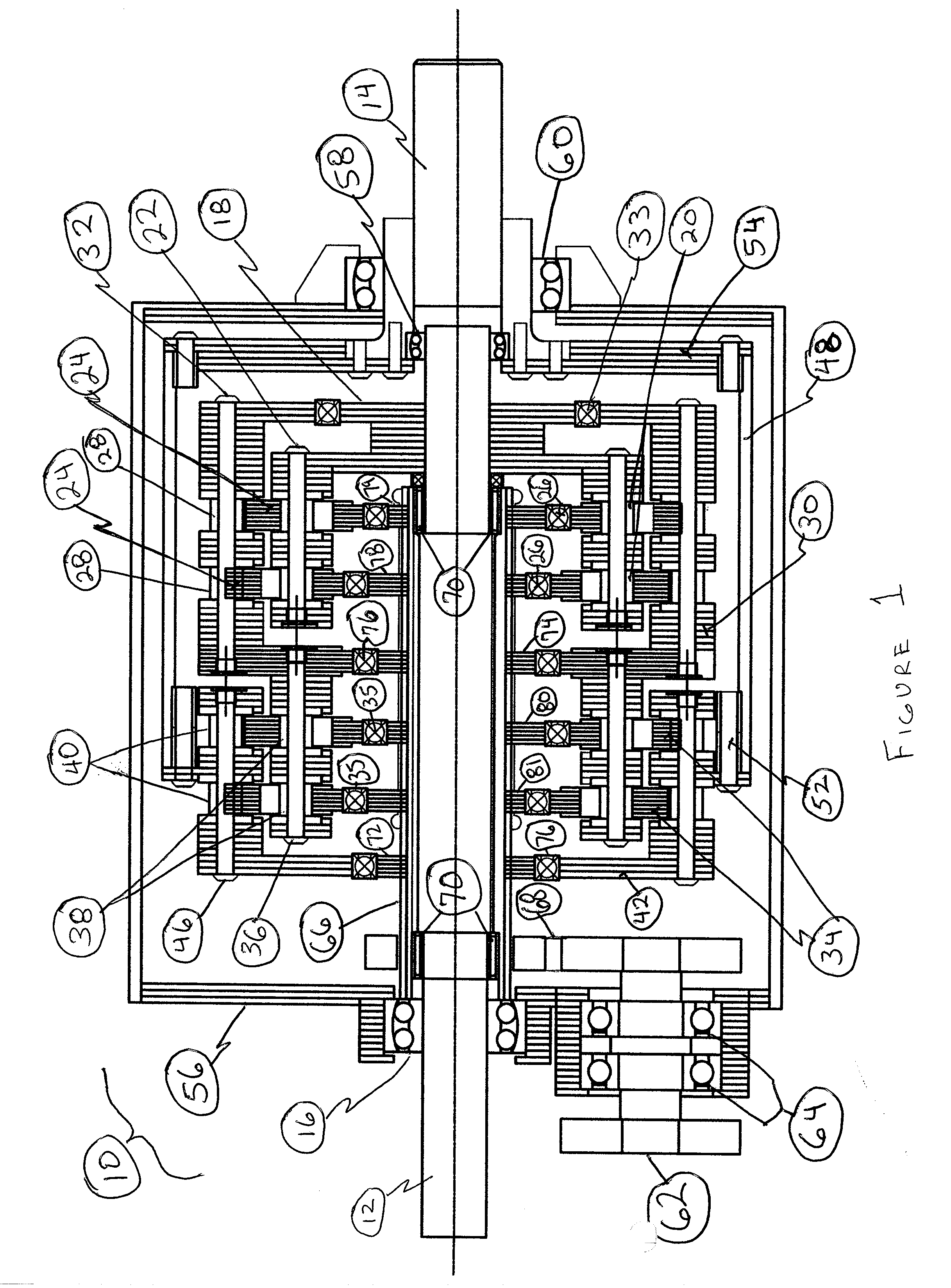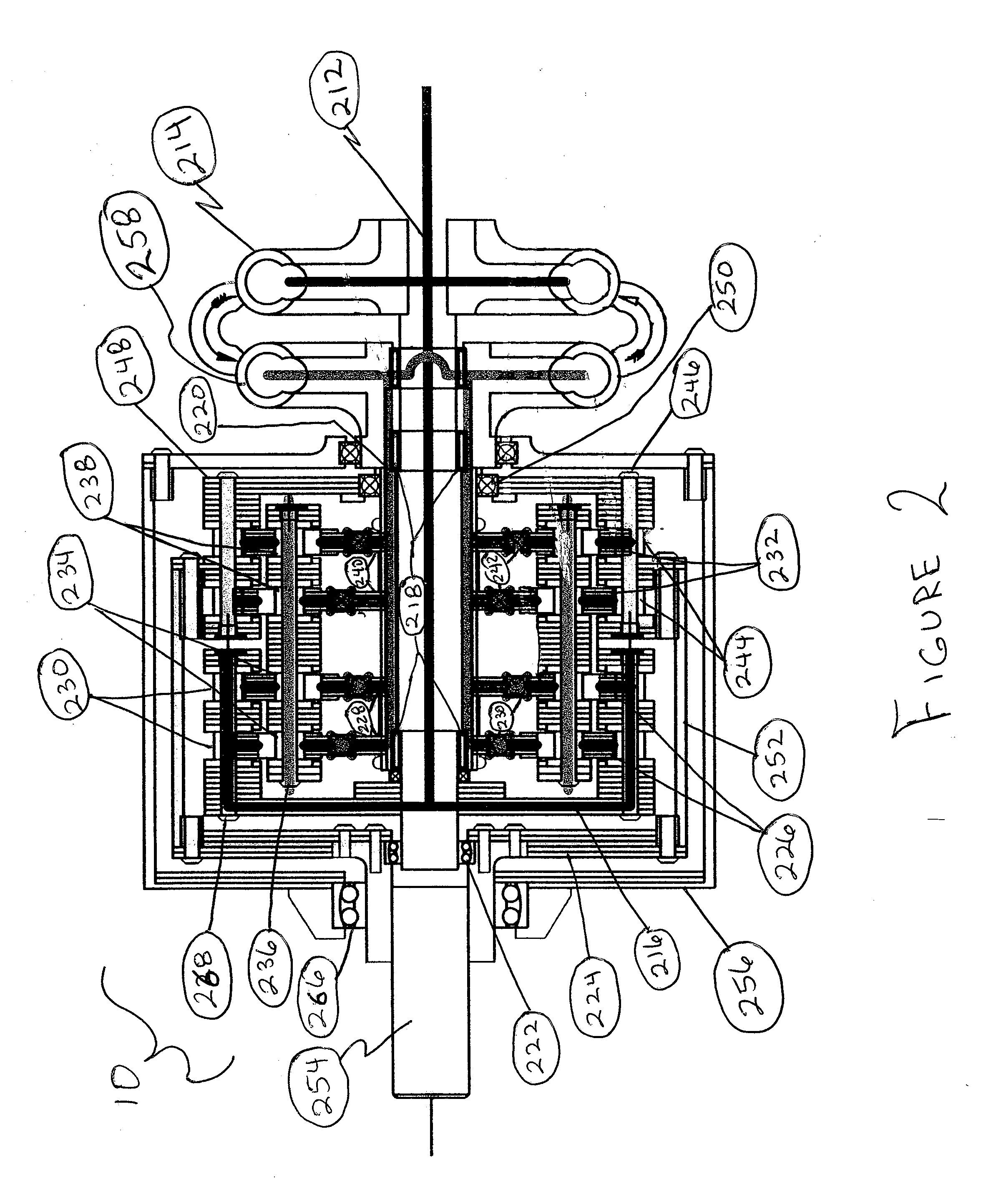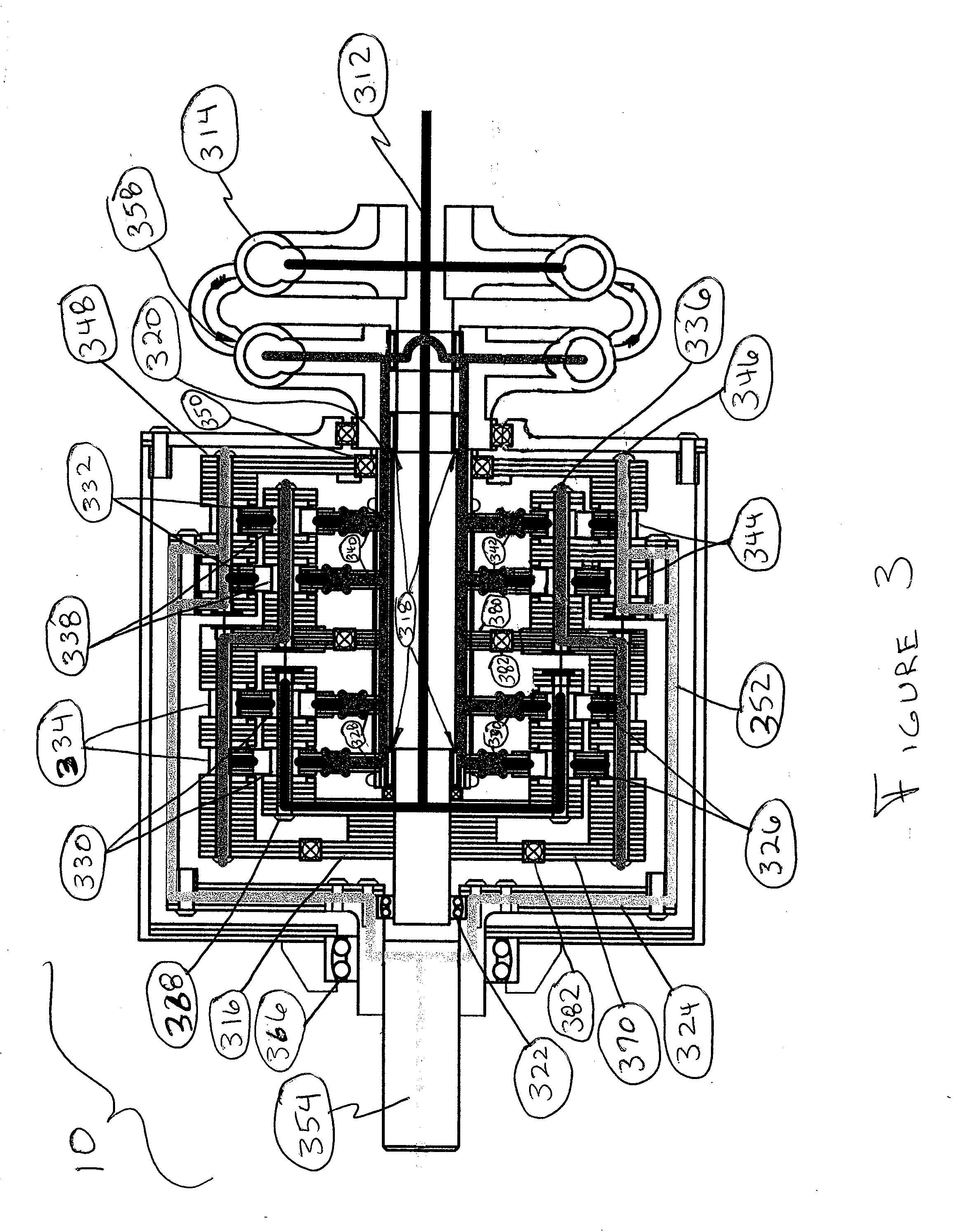Power transmission system with continuously variable speed control
a technology of power transmission system and output member, which is applied in the direction of fluid gearing, gearing, gearing equipment, etc., can solve the problems of low power transmission system, system is not without its own drawbacks, and is typically limited to small applications with relatively low horsepower, so as to achieve maximum fuel economy, reduce the speed of the output member, and increase the transmission torque
- Summary
- Abstract
- Description
- Claims
- Application Information
AI Technical Summary
Benefits of technology
Problems solved by technology
Method used
Image
Examples
Embodiment Construction
[0036]Referring to FIGS. 1 through 4, a device for continuously variable power transmission is disclosed and generally designated by numeral 10. In the preferred embodiment, the primary components of the device are laminated. That is, each component is comprised of a plurality of relatively thin pieces of source material, generally consisting of a metal alloy or some other suitably rigid material, which are individually cut and sandwiched together using affixing or bonding means to form the final primary components. Accordingly, several different source materials may be laminated into a single part or assembly as needed for the particular application. Production by way of lamination greatly reduces both start up time and cost as well as production time and cost without sacrificing strength or quality. Start up time and cost is reduced by eliminating the need for long-lead casting and machining equipment. Correspondingly, production time and cost is reduced by eliminating the need fo...
PUM
 Login to View More
Login to View More Abstract
Description
Claims
Application Information
 Login to View More
Login to View More - R&D
- Intellectual Property
- Life Sciences
- Materials
- Tech Scout
- Unparalleled Data Quality
- Higher Quality Content
- 60% Fewer Hallucinations
Browse by: Latest US Patents, China's latest patents, Technical Efficacy Thesaurus, Application Domain, Technology Topic, Popular Technical Reports.
© 2025 PatSnap. All rights reserved.Legal|Privacy policy|Modern Slavery Act Transparency Statement|Sitemap|About US| Contact US: help@patsnap.com



